Tony Ranasinghe multifaceted, multi-talented stage, film debonair thespian character actor, author, script writer,most romantic lover in our films – By Sunil Thenabadu
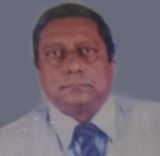 As a schoolboy, Tony had been too shy to take part in plays but as a grownup, he yearned to be an actor. Even as a schoolboy he had been enamoured of acting but his shyness had stood in the way. But now the acting bug bit him hard. He was drawn towards acting
As a schoolboy, Tony had been too shy to take part in plays but as a grownup, he yearned to be an actor. Even as a schoolboy he had been enamoured of acting but his shyness had stood in the way. But now the acting bug bit him hard. He was drawn towards acting
Tony is one of the few actors in our country who uses facial expressions in whatever role he plays in the most natural way. This makes him so unique
Tony’s cherished ambition to blaze a name for himself on the silver screen remained unfulfilled for many years. He went for interviews and auditions but was unsuccessful. The yearning to act on screen was stirring within him but try as he might, Tony just could not get that lucky break he was hoping for
He had finally made his entry into films as an actor and that too in one of the finest movies made by the greatest director in Sinhala cinema. It was as if all his earlier failures to get into films had been due to divine providence
There is no denying that ‘Delovak Athara’ launched Tony to instant fame. The advent of Tony Ranasinghe on the Sri Lankan film scene brought about a refreshing change in Sinhala films.
Tony the titan veteran actor, award winning script writer and author was an actor whose image will flutter in our hearts forever in almost all the characters he portrayed in theatre and cinema. His role as Shylock in ‘Vanisiye Welenda’ (Merchant of Venice) produced by Bandula Vithanage was so astonishing in the history of Sri Lankan stage. Similarly, Tony created unforgettable characters in millions of hearts playing roles like ‘Baladasa’ in ‘Gamperaliya’, ‘Nissanka’ in ‘Delowak Athara’ and his well liked role ‘Bibile Eththo’ in ‘Hulawali in cinema. This gifted acting diverse audiences enjoyed again and again on the mini screen when he plays in the teleplay ‘Pinsara Dosthara’ as Dr. Crus the character based on famous Dr. Jekyll in the world-renowned Scottish author Robert Louis Tevenson’s novel ‘Strange Case of Dr Jekyll and Mr Hyde’.
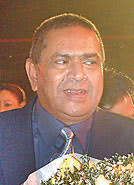 “This role depicts the struggle of every man to hide one of his dual characteristics. Each one of us tries tto hide the evil side of us and to show in order to promote the good side,” . According to the story Dr. Crusz, a scientist tries to invent a drug that would help him to get rid of the evil man within him. Unfortunately, what happens is the due characteristic is separated and one lives a just life while the other carries on in a killing spree.
“This role depicts the struggle of every man to hide one of his dual characteristics. Each one of us tries tto hide the evil side of us and to show in order to promote the good side,” . According to the story Dr. Crusz, a scientist tries to invent a drug that would help him to get rid of the evil man within him. Unfortunately, what happens is the due characteristic is separated and one lives a just life while the other carries on in a killing spree.
‘This is an eternal theme which is taught in every religion. Therefore, this teledrama also is completely different from stereotyped teledramas which drags on for too many episodes’ . The veteran actor, script writer and author has his own reservations for the medium of teledrama which has become highly commercialised rather than popular as a form of art.
“Any value in art is in its brevity of it. But this brevity cannot be expected in today’s teledramas wherein one story drags for twenty episodes or much more.
Sometimes a teledrama is not a good medium of art as a single story is dragged on for more than twenty episodes. ‘Any value in art is in its brevity. That is to compress, be short and sweet’, according to the veteran actor .
Tony who excelled as an actor for more than five decades is optimistic that film goers would return to cinemas as it is a supreme form of art. ‘When people can sit in their homes and watch teledramas and films, they would be reluctant to go to cinemas. But Tony was sure that this notion will fade away after sometime when people will return to theatres to enjoy the real experience of cinema’
This was like when the people thought that the art of painting would be finished with the invention of the camera and photography. It did not happen. Instead, painters went in search of alternative styles like impressionism and expressionism to promoted painting.
Asked whether the Sri Lankan cinema could make its mark as an independent cinema in the world, Tony was of the view that it would be hard to promote a commercial cinema while we have won many awards for the arty films. “But Commercial cinema has to be there so that the producers would be able to invest on artistic cinema as well,”.
In his long career Tony won many awards including the ‘Best Supporting Actor’ Sarasaviya in 1966 for his role in ‘Parasathu Mal’, Best Actor Awards for ‘Hanthane Kathawa’ in 1969, ‘Duhulu Malak’ in 1976 and Ahasin Polawata in 1979. In 1993 ‘Saptha Kanya’ won him the Best Actor Awards from Sarasaviya, Swarna Sanka, Presidential and OCIC. His potential to screenplay writing was proved with the Sarasaviya Awards he won for ‘Koti Waligaya’, ‘Keli Mandala’, ‘Awaragira’ and ‘Pavuru Walalu’.The portrayals of these roles of the dashing debonair actor have delighted diverse audiences.
Sinhala cinema began moving away from Indian “masala” influence and started coming into its own in the sixties and seventies of the last century. Four great male actors made their mark in that golden phase of Sinhala moviedom. They were, in alphabetical order – Joe Abeywickrama, Gamini Fonseka, Vijaya Kumaratunga and Tony Ranasinghe. Alas! All four famous thespians are no more now.
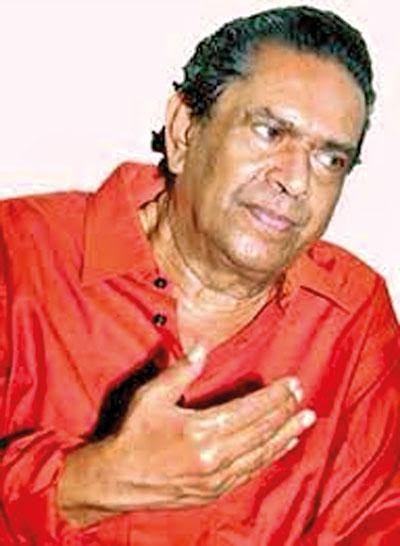 Originally Ranasinghe Hettiarachchilage Ignatius Anthony Silva was born in Mutwal ,the anglicised name for Modera/Muhathuvaaram. He was the second of eight siblings to Dona Lucia Catherine and Emmanuel Cyril Silva who were both of the Roman Catholic faith who has had no hereditary affiliations to portraying roles in dramas and films.
Originally Ranasinghe Hettiarachchilage Ignatius Anthony Silva was born in Mutwal ,the anglicised name for Modera/Muhathuvaaram. He was the second of eight siblings to Dona Lucia Catherine and Emmanuel Cyril Silva who were both of the Roman Catholic faith who has had no hereditary affiliations to portraying roles in dramas and films.
“Anthony de Silva”
Young Anthony studied at the Catholic institutions of St. John’s mixed school and De La Salle College in Mutwal. In between, there had been a stint at St. Anthony’s College in Wattala. Tony was known as Anthony de Silva at school then. He was very shy and never, ever acted in a school play in those days. He was interested in cricket had been a voracious reader. He had wanted to be a writer. At one stage he even had thought of entering the priesthood. Since he was known as Anthony during his schooldays, his nickname was “Anta” derived from Anthony. This led to his classmates teasing him “Anta Panta Pol Panta” during young days. Anthony de Silva (Tony Ranasinghe) quit studies while in the Senior School Certificate class at De La Salle College when he and his classmates were instructed to memorise the Bible in full. Tony objected to this strongly has had a fiery row with the school director, a European Catholic Priest.
He had dropped out of school and enrolled at Commercial College where he studied short hand, typing, and bookkeeping. Being weak in arithmetic, Tony had failed in bookkeeping but obtained a London City and Guilds Certificate in shorthand and typewriting. He could take down shorthand at 80 words a minute and type 40 words in 60 seconds.
As an aspiring stenographer, Tony tried finding a permanent job in many places. He tried to be a Hansard reporter in Parliament as well as a court reporter. Finally, he got a permanent job as an English stenographer at the Department of Government Electrical Undertakings, which later became known as the Ceylon Electricity Board. With secure employment assured Tony got married to Sirima Indrani Wickremasuriya and began raising a family. The couple went on to have four children and six grandchildren.
As a schoolboy, Tony had been too shy to take part in plays but as a grownup, he yearned to be an actor. Even as a schoolboy he had been fond of acting but his shyness had stood in the way. But then the acting bug bit him hard. He was drawn towards acting.
“Apey Kattiya”
Propelled by a desire to act, Tony began seeking out breaks to act. Tony’s brother Ralex was exceptionally supportive of his sibling’s ambition to be an actor. Ralex’s efforts to launch his brother as a film actor were not very successful but he did help Tony get a break as a stage actor. A bunch of young bilingual enthusiasts of the arts, literature, and cinema formed themselves into a group called “Apey Kattiya”.
Among these were persons like Cyril B. Perera, Sugathapala de Silva, Dharmasiri Wickremaratna, Vipul Dharmawardene, Augustus Vinayagaratnam and G.W. Surendra. Ralex was also associated with this group. So when Sugathapala de Silva wrote the play ‘Boarding Karayo’ about people in a boarding house to be put on the boards by “Apey Kattiya”, Ralex was able to get his brother an opportunity to play a part in it.
Ralex had already changed his surname de Silva of Portuguese origins to the more Sinhala-sounding Ranasinghe. He wanted his brother Anthony de Silva also to do the same. Ralex felt that such a name change would help him in an acting career. He wanted his brother to be named ‘Tony Ranasinghe ‘ like the Hollywood actor Tony Curtis. Anthony de Silva was willing to transform himself as Tony Ranasinghe but kept deferring because of the cumbersome legal processes involved in changing a name officially.
Meanwhile, Sugathapala de Silva who also preferred the name Tony Ranasinghe to Anthony de Silva started using the name Tony Ranasinghe in preparing publicity materials for ‘Boarding Karayo’. Realising he had to change his name quickly, Tony consulted the chief clerk at his office seeking advice on how to go change his name swiftly. He was pleasantly surprised when told that as a government servant, all he had to do was to inform the Shroff formally of the name change. This he did immediately and by the time ‘Boarding Karayo’ opened, Anthony de Silva had legally turned into Tony Ranasinghe.
Sugathapala de Silva
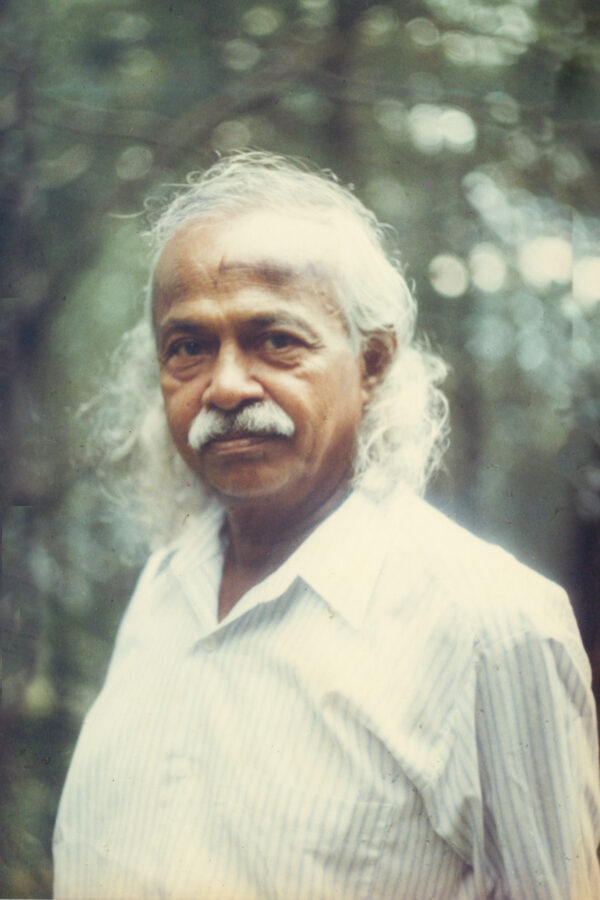
Image source : wikipedia
‘Boarding Karayo’ featuring G.W. Surendra and Prema Ganegoda among others, was Tony Ranasinghe in stage debut. It was a resounding triumph and soon “Apey Kattiya” went on to produce more plays. Sugathapala de Silva wrote ‘Thattu Geval’ with almost the same cast as that of ‘Boarding Karayo’.
Then came another play by Sugathapala, ‘Harima Badu Hayak’ adapted from ‘Six characters in search of an author,’ the meta-theatrical absurdist drama by Luigi Pirandello. Tony Ranasinghe acted in all three plays by Sugathapala de Silva and earned much praise from the playwright, critics and fans. In describing the actor, Sugathapala said: “Tony Ranasinghe is one of the few actors in our country who uses facial expressions in whatever role he plays in the most natural way. This makes him to be so unique.”
Despite the kudos and popularity gained by acting in Sugathapala de Silva’s plays, Tony got his first award for acting in a play by another dramatist. The play was Dharmasiri Wickremaratna’s ‘Ran Thodu’. It had a bold controversial theme relating to premarital sex and consequent loss of virginity. The play’s plot about the heroine losing her gold earring was symbolic of her losing her virginity. Tony Ranasinghe and Anula Karunathilaka acted splendidly. The play was a sensation. Both Tony and Anula won the Governor-General’s Award in 1963 for Best Actor and Best Actress in a Drama for their stage performances in ‘Ran Thodu’. Tony was now regarded as an accomplished stage actor but needed to act in films.
Ralex Ranasinghe
As stated earlier, Tony’s brother Ralex who was then in the advertising world tried very hard to promote his brother as a film actor. Ralex was an excellent photographer. Ralex Ranasinghe photographed his brother in many poses and from different angles. He made him dress up and pose like Indian actor Dilip Kumar and Hollywood stars Gregory Peck and Humphrey Bogart and compiled a photo portfolio. This was sent to most prospective filmmakers but to no avail. Incidentally, Tony was an ardent admirer of Dilip Kumar and was greatly influenced by him. In later years Tony translated Dilip’s autobiography into Sinhala as a labour of love.
Tony Ranasinghe’s cherished ambition to blaze a name for himself on the silver screen remained unfulfilled for many years. He went for interviews and auditions but was unsuccessful. The yearning to act on screen was stirring within him but try as he might, Tony just could not get that lucky break he was hoping for.
At one point Tony heard that Maestro Lester James Peries was going to film Martin Wickremasinghe’s novel ‘Gamperaliya’ and was looking out for actors to portray the main roles. Tony rushed to see Lester with his friend Arthur Amarasena, the husband of actress Sriyani Amarasena. The Director, however, had picked Henry Jayasena, Gamini Fonseka and Wickrema Bogoda to play the characters Piyal, Jinadasa, and Tissa respectively. Lester chided Tony gently saying the actor should have come to him earlier. Tony returned home dejected.
Baladasa in ‘Gamperaliya’
fate however had dictated that Tony Ranasinghe should get his first film breakthrough Lester James Peries in ‘Gamperaliya’. What happened was that Lester, Sumitra and Gamini Fonseka had come to Lumbini to see the play ‘Boarding Karayo’ at the invitation of Wickrema Bogoda, who was acting in the play and had been selected to act in ‘Gamperaliya’.
Lester was highly impressed by the performance that he thought of casting some of the ‘Apey Kattiya’ actors for minor roles in his film. Thus Anula Karunathilaka, G.W. Surendra and Tony Ranasinghe were given small roles in ‘Gamperaliya’. Tony was elated. His cherished yearning to act in a film was achieved.
Tony Ranasinghe got the role of ‘Baladasa’. Many scenes featuring Tony were shot but when the final version was completed, several ‘Baladasa’ sequences were edited out. Tony was naturally disappointed but not depressed. He had finally made his entry into films as an actor and that too in one of the finest movies made by the greatest director in Sinhala cinema. It was as if all his earlier failures to get into films had been due to divine intervention.
However it was destined that Tony Ranasinghe’s film career should commence with Lester James and Sumitra Peries. The cinematic journey of Tony Ranasinghe began with ‘Gamperaliya’ released on December 20, 1963. Tony Ranasinghe’s ‘Baladasa’ portrayal amounted to a cameo role only in ‘Gamperaliya’. But maestro Lester James Peries decided to cast him in the main role in his 4th feature film ‘Delovak Athara’ .
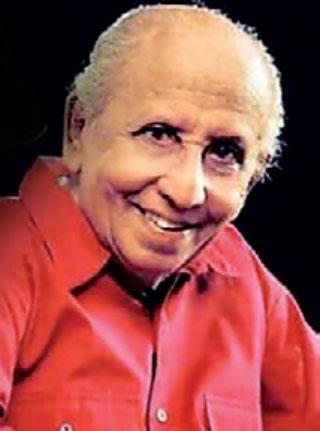
The film ‘Delovak Athara’ made on a Rs. 200,000 budget was released on May 24, 1966. Tony Ranasinghe essayed the role of Nissanka in the movie. Lester James Peries in the book ‘Lester by Lester’ comprising interviews conducted by Kumar de Silva spoke highly of Tony. Lester recalls as follows: “I think the film made Tony Ranasinghe into a big star’. Tony was an enormous success in that role. It was not the traditional Sinhala hero but a new kind of a contemporary hero. He was very good-looking at that time. The film made him so popular that a whole lot of offers came his way immediately.”
There is no denying that ‘Delovak Athara’ launched Tony to instant fame. The advent of Tony Ranasinghe on the Sri Lankan film scene brought about a refreshing change in Sinhala films.
What was most remarkable about Tony Ranasinghe’s thespian skills was that he was both a competent lead and character actor. A character actor according to dictionary definition is an actor who specialises in playing roles as eccentric or unusual people rather than leading roles in films. A character actor plays unusual, strange or interesting characters instead of being the primary character.
A clear-cut definition is not always possible to distinguish a lead actor ,but one is always able to distinguish between a lead actor and character actor when you see the film. It may be difficult to rigidly demarcate who a character actor is but the performances by actors on screen do give a good indication. The lead roles in films are very often repetitive and the actors playing them often become typecast. Even those playing supportive roles of the same kind can become “typecast actors”. These spheres have generalised definitions. Both groups of actors have occasionally strayed into the other sphere, but they could be generally classified into these broad categories.
Tony Ranasinghe however was of a different breed. Tony was both a lead and character actor. Of the 119 films he has acted in a film career spanning more than five decades, Tony has played the lead actor in 47 and character actor roles in 72. He has played not only the romantic lover in many films but has also acted in many other roles including that of the dastardly villain. Versatility was his strength. Variety was his hallmark.
Appreciation from one’s peers is perhaps the greatest form of honour one could receive. In Tony’s case, both Gamini Fonseka and Malani Fonseka the “King” and “Queen” of Sinhala film actors in their heyday have showered lavish praises on him in newspaper interviews. In an interview in 2004, Gamini Fonseka lavished praise on Tony Ranasinghe: “Tony as an actor is the best character-based actor not even witnessed in the Indian screen. He has an actor within himself who emerges at the correct instant. Tony Ranasinghe is the best character actor in Asia.”
Malani Fonseka in an interview given in the aftermath of Tony’s demise said of him: “Tony Aiya was a well-read man of wisdom. Not only as his co-star but also as an outsider, I tremendously enjoyed watching Tony Aiya on the screen and to date I find him the most romantic lover we’ve ever
had in our films. There will never be another Tony.” It could be seen from these statements by the two Fonsekas’ that Gamini acknowledges Tony as the “best character actor” while Malani describes Tony Aiya as the “most romantic lover we’ve had in our films”. Very high praise indeed! But then Tony is worthy of such praise and deserves it fully. The comments by the Fonseka duo also draws attention to the dynamic duality of Tony Ranasinghe. Gamini and Malani complement each other in complimenting Tony.
Tony Ranasinghe is one actor in Sinhala cinema who has connected with both spheres of lead roles and character roles simultaneously from the time he burst on screen. Tony played the lead role which was very often that of the romantic lover perfectly portrayed in several films, thereby fitting Malani’s description. Tony also played non-hero character actor roles with finesse in many films, thus deserving the admiration heaped upon him by Gamini.
Tony Ranasinghe was one of Sri Lankan cinema’s handsome and most lovable actors. He acted in diverse roles ranging from romantic lovers to affectionate fathers and won awards for acting in both films and plays. Tony also made the smooth transition from stage to screen and later from the big screen to the small screen. He shone on television too as an actor and scriptwriter. Likewise, he wrote the screenplay and dialogues for some films too. In later life, he transformed into a playwright translating and adapting many works of William Shakespeare into Sinhala. The spontaneous outburst of grief and sorrow at his demise illustrated the esteem and regard with which in high esteem Tony Ranasinghe was held.
If Dilip Kumar, Dev Ananda and Raj Kapoor became significant landmarks in the Indian cinema, undoubtedly their Sri Lankan counterparts would be Gamini Fonseka, Joe Abeywickrama and Tony Ranasinghe.
This legendary actor cum author Tony Ranasinghe – who asserted his superiority on the silver screen – received exclusive attention when he is being felicitated at a special mega ceremony at the BMICH on 31st May 2006 on his 69th birthday “Tony Ranga Sobha” as an unforgettable birthday gift to a man who has immensely contributed to the Sinhala cinema industry,as a film personality with dimensions that would be hard to match.
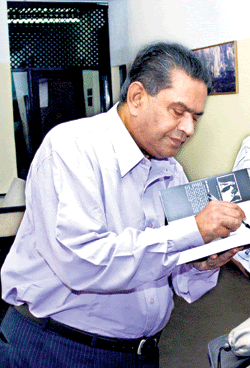
It was Wimalaweera Master who elected Tony for two of his films – Punchi Amma and Rodi Kella – but unfortunately the projects were shelved after the sudden demise of Wimalaweera Master. This setback did not deter young Tony.
It was none other than prolific filmmaker Lester James Peries who spotted Tony’s exceptional talent and offered him the role of Baladasa in ‘Gamperaliya’ from where he strode on and on.
For Tony, success came because of hard work, commitment and dedication but he is a man who takes success easily. It never went to his head. They say an actor’s ego is like cholesterol which has a constant tendency to allow it in your blood to rise. But this man has done so well to keep it controlled at a very low levels.Tony will always be remembered for his down-to-earth qualities and his tremendous competency in whatever role he did. As an actor his greatest asset has been his ability to lend credibility to even the most ridiculous roles he was called upon to play.Interestingly, most film heroines including Malani Fonseka have always stressed that Tony Ranasinghe was the most romantic hero they have ever worked with.
At the same time his film world colleagues insist that they must think not once or twice but several times before taking Tony’s words seriously, because he is so smart in getting people trapped through his practical jokes and dead ropes. Tony is indeed a man with a superb sense of humour, just as he is as a loving and caring friend and guide to the younger generation.The organizing committee of ‘Tony Ranga Sobha’ should be applauded for taking the initiative to honour the great actor who deserves an appreciation in return for what he had contributed to the Sinhala cinema industry.This was probably the first time that Tony was felicitated in such a manner in his illustrious career spanning more than 48 years.
There is little use in honouring people after they are dead and gone. So, the authorities should not forget that there are more veterans who ought to be felicitated while they are still alive and kicking.
SUNIL THENABADU In Brisbane
e mail sthenabadu@hotmail.com
WhatsApp 0061444533242







